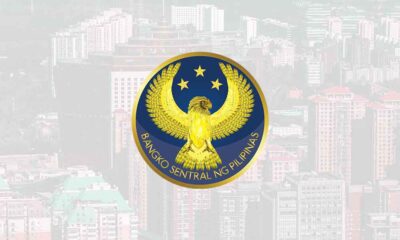I-ACT to Include Local Rerouting Plans in Ops
Cebu Provincial Traffic Management focal person Jonathan Tumulak said his office is now improving the management capabilities of traffic management officers in Cebu towns and cities following the Sangguniang Panlalawigan’s (SP) approval of Ordinance 2018-13, or the Inter-Agency Council on Traffic (I-ACT).
In an interview over radio DyAR on Saturday, Aug. 25, Tumulak said the council will convene once Gov. Hilario P. Davide III approves the measure this week.
Davide, who pledged to exert efforts to help solve Cebu’s traffic, is set to sign the ordinance on Tuesday.
Last Monday, the Provincial Board (PB) approved in mass motion the creation of I-ACT, which will coordinate with various government agencies to manage and enforce, review and evaluate, formulate policies and conduct training and seminars on traffic.
“I-ACT will serve as the mother of all traffic management offices that is being created in most LGUs; they will become an avenue where our towns can voice out their traffic concerns, and the body can help solve this concern,” Tumulak said.
The ordinance, authored by second district board PB Member Edsel A. Galeos, also identifies the powers, function, composition, members and alternate members of the council.
The Provincial Governor will sit as its chairperson, while the members and representatives will mostly include local chief executives and traffic managers of each towns and cities in the Cebu Province.
Tumulak, a former Cebu City Traffic Operations Management ( Citom) official, explained that a traffic problem of a particular town can now be addressed to an appropriate agency since I-ACT members will also include officials from the Land Transportation Office (LTO), Land Transportation Franchising and Regulatory Board (LTFRB) and the Department of Public Works and Highways ( DPWH).
“Next week, we are looking forward for SP approval of the proposed Unified Traffic Code for Cebu Province,” he said.
According to Tumulak once the PB approves the measure, it will soon be implemented in all towns and cities in Metro Cebu.
The traffic code pending before the PB was patterned after Cebu City’s traffic rules and Republic Act 4136, Tumulak said.
Aside from being the central nervous system for most traffic concerns in Metro Cebu (Carcar City to Danao City), Tumulak said that I-ACT will also coordinate with the traffic managers of the cities of Cebu and Mandaue through the “inter-operability clause” under the traffic ordinance.
Operations
As part of the preparation for the council’s creation, Tumulak said he is almost complete in providing traffic management training and seminar to traffic officers and barangay tanods in the towns and cities of Metro Cebu.
These towns and cities recently created their own traffic management offices as part of the full operation of the I-ACT, Tumulak said.
These are the cities of Carcar, Naga, Talisay, Danao and Mandaue and the towns of Minglanilla, San Fernando, Compostela and Carmen.
In Mandaue, there are 200 operatives who underwent a thorough training on traffic management.
In Minglanilla town, Tumulak said he facilitated a basic training on traffic direction and control to over 90 traffic personnel.
He said that in turn, these operatives will eventually echo what they’ve learned to their upcoming trainees.
The Capitol, according to Tumulak, will help in the operational aspect by giving out needed equipment and training among traffic constables from each town.
The financial aspect, like salary and allowances, will be shouldered by the member LGUs, said Tumulak.
Transport route plan
With over 180,000 new vehicles in Cebu (data as of 2017), Tumulak said the council will strictly observe the implementation of the local public transport route plan (LPTRP), which is seen to allow local government units (LGUs) to manage vehicles within their jurisdiction.
Under the LPTRP, Tumulak said the LGUs will craft their own route plan that needs to be changed because of the recent economic developments.
Tumulak said the LPTRP also addresses one of the main causes of traffic congestion brought about by illegally parked vehicles along barangay roads.
To address this concern, the LPTRP (which will be eventually created in each town) will form a team that will play a vital role in approving franchise applications and renewal; and will check the actual parking requirements asked by law.
“Through LPTRP, the barangay will now have a responsibility of screening the requirements of franchise applicants,” Tumulak said.
With this, the LTFRB will not grant franchise application or renewal without prior approval from the local LPTRP team, which will be compose of the municipal engineer, planning officers, drivers group, school groups, business association, local traffic manager, local PNP, and local LTO.
“Through this, we can lessen illegally parked vehicles that continues to contribute so much in our traffic problems“ Tumulak said.
“Sa barangay pa lang daan, ma check na kung aduna ba gyuy parkingan ang maong applikante.”
In Cebu Province, over 100,000 new vehicles will hit the road each year, while 134,000 motorcycles will also come in annually.
Tumulak also explained that under the LPTRP, the LGUs will have the power to determine the kind and the volume of vehicles suitable to ply in their areas. (CEBU PROVINCIAL GOVERNMENT)


































